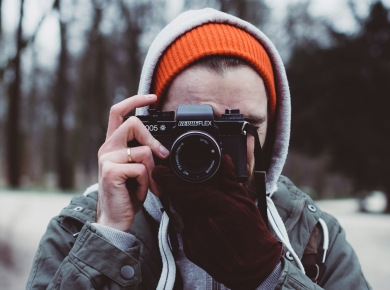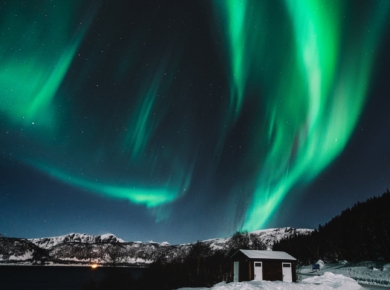In the anticipated year of 2024, photography enthusiasts are in for a treat as experts predict an upsurge in auroras, offering a unique opportunity to capture the mesmerising Northern Lights. This phenomenon is set to be particularly spectacular due to the sun reaching the peak of its 11-year cycle, termed the “solar maximum.” National Geographic notes that this peak is of special significance, given that current solar activity is the highest it has been for 20 years.
What to Expect in 2024 and How Photographers Can Seize the Moment
During the solar maximum, heightened solar activity creates ideal conditions for the appearance of auroras. Photography enthusiasts keen on capturing this celestial display should gear up for potential sightings in regions where Northern Lights aren’t typically observed. The heightened solar activity is expected to make the auroral zone more active and expand further south, potentially providing opportunities for aurora sightings in areas that have not seen the Northern Lights in many years.



To enhance your chances of witnessing and photographing this extraordinary event, consider using aurora forecasting apps such as Aurora Alerts. These apps can help you predict when the Northern Lights will be most visible and the extent to which the auroral oval will stretch due to solar activity. Aim for times around the March and October equinoxes, as these periods tend to see more frequent auroras.
However, successful aurora viewing isn’t just about timing. Factors like location, cloudy skies, and light pollution play crucial roles. To escape manmade light pollution, photographers can explore certified international dark sky places listed on DarkSky.org.
Best Locations for Capturing the Northern Lights in 2024
Selecting the perfect location is paramount for photographers aiming to capture the Northern Lights during the anticipated solar maximum in 2024. Iceland, with its breathtaking landscapes, stands out as a prime destination, offering waterfalls, geothermal activity, and glaciers as stunning backdrops. The UK and Ireland, experiencing more frequent auroras due to heightened solar activity, provide unexpected yet captivating displays in sparsely populated areas away from light pollution.
In the United States, regions along the 40th parallel, including Provo, Utah, and Boulder, Colorado, offer potential viewing sites, especially during the solar maximum. Meanwhile, Norway’s Lofoten archipelago, Tromsø, and Kirkenes provide picturesque locations known for optimal Northern Lights conditions. For those seeking remote escapes, Greenland, situated inside the Arctic Circle, offers starkly beautiful landscapes and a less crowded setting, promising an unforgettable experience for adventurous photographers.



Photography Tips: Gearing Up for the Aurora
- Travel Smart: The Northern Lights often appear during the late hours, necessitating warm clothing and, for safety, consider traveling with others. Keep camera batteries warm in interior pockets to prevent them from losing energy in below-zero temperatures.
- Pack a Sturdy Tripod: Stability is paramount when photographing the night sky, and a lightweight yet sturdy tripod is essential. A remote shutter-release cable or timer can also help avoid camera shake.
- Wide-Angle Lens: Capture the vastness of the sky with a wide-angle lens, allowing you to showcase the dancing lights in their full glory.
- Focus on Composition: Elevate your images with strong compositions. Incorporate elements like trees, bodies of water, or interesting structures subtly lit to avoid overexposure. Experiment with different focal points and consider shooting vertically to encompass more aurora action.
Camera Settings and Techniques
- Low-Light Capable Lens: Use a lens with an aperture of F/4.0 or lower to avoid excessive ISO settings and reduce noise in your images.
- Manual Settings: Shooting in RAW allows for more detailed images. Experiment with various exposures between five and 30 seconds, adjusting aperture, ISO, and shutter speed based on aurora intensity.
- Manual Focus: Switch to manual focus, fixing the lens on infinity, and aim for the sky and distant horizons.



In conclusion, 2024 presents a rare opportunity for photographers to capture the Northern Lights at their brightest. Armed with the right equipment, knowledge, and a touch of patience, enthusiasts can turn this celestial event into stunning photographic masterpieces. So, gear up, plan your journey, and get ready to chase the auroras in the upcoming year. The heightened solar activity in 2024 adds an extra layer of excitement, making it the best time in over two decades to capture the awe-inspiring Northern Lights.













1 Comment